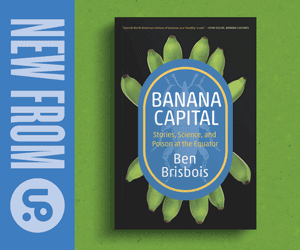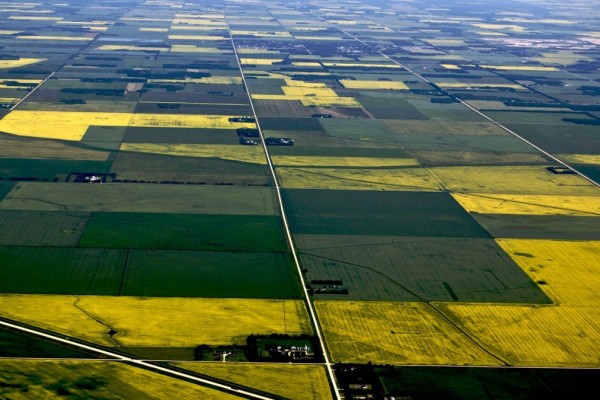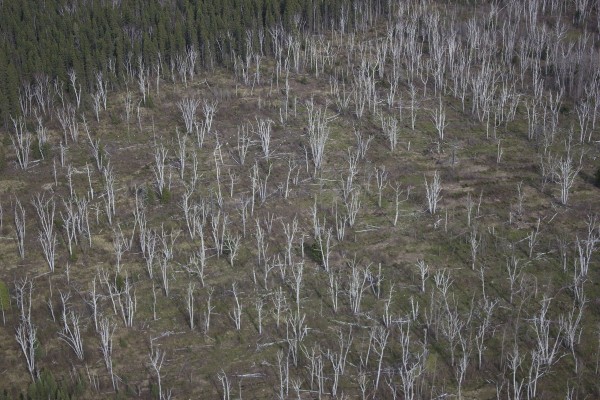Sewing the Seeds of a New World Agriculture
Review of The Global Food Economy: The Battle for the Future of Farming and Good Crop / Bad Crop: The Privatization of the Seed
The Global Food Economy: The Battle for the Future of Farming
by Tony Weis Fernwood, 2007
On the phone with my sister Madeleine recently, I told her I was doing some background research on the global food crisis. “Hunger’s never a crisis,” she said. And she was right. The more we learn about the roots of the latest spike in food prices, the more obvious it becomes that hunger is really a predictable feature of our agricultural system. At root, the question “How do we feed everyone?” is really the question “How should we grow our food?”
As it happens, two sharp and accessible Canadian books released in the last couple of years skilfully explain how we got into this mess, and how we can get out. Though it may be trendy for urban lefties to focus on urban agriculture and other small-scale projects that could change our relationship to food, these authors take a vital step back to consider the big, rural systems that actually produce most of the food we eat – and will keep doing so for the forseeable future.
Tony Weis is an assistant professor of geography at the University of Western Ontario, and he’s really stepped back to look at the big picture. His book, The Global Food Economy: The Battle for the Future of Farming is a lively, detailed, very readable survey of the global food economy. Ranging from the rich world to the majority world, his book is a scathing indictment of the “problems and iniquities of the world food system.”
And he shows it’s not an accident. For years, the TNCs have successfully lobbied rich-world governments to use food aid as way to protect their profits – essentially dumping of surplus product abroad to keep domestic prices up.
There were political benefits, too. In 1957, the prescient American politician Hubert H. Humphrey told a Senate committee, “If you are looking for a way to get people to lean on you and to be dependent on you, in terms of their cooperation with you, it seems to me that food dependence would be terrific.” Maneuvres at the World Trade Organization are more subtle, of course, and the chapter describing these is the one part of Weis’ book that’s harder to follow.
Yet, if Weiss renders the big guys’ actions in painful detail – with much more nuance than my glib summary suggests – they’re ultimately the backdrop to Weis’ real protagonists, the world’s small farmers. Weis takes special care to argue that, while he’s depicting a complex and weighty system of powerful interests, there are no iron historical laws. In La Via Campesina, a vast federation of the world’s peasant organizations, Weis sees an example of the potential strength of bottom-up organizing with the potential to make transformative change.
And he makes a strong case that those places where organic practices and small-scale farming can make dramatic gains – both in producing good food and restoring ecological balance – are the very areas where hunger is especially severe: the marginal lands of the majority world, where impoverished farmers currently live.
This is not, Weis insists, a backwards, Luddite maneuvre. “On the contrary,” he writes, “to significantly increase the scale of organic and near-organic practices will require much more scientific research and training geared towards better understanding how agro-ecosystems operate and how key dynamics can be selectively enhanced.” This will take a process of learning that’s collectively financed, turning the farm into a public laboratory – a far cry from the private factory model that’s currently in vogue.
Where Weis’ analysis spans the entire globe and the myriad features of its agricultural systems, Devlin Kuyek, a researcher with GRAIN, a progressive agriculture NGO, offers a much narrower focus in his charmingly titled > > >
Good Crop / Bad Crop: The Privatization of the Seed
by Devlin Kuyek
Between the Lines, 2007
Kuyek’s short history (just 125 pages) covers one hundred years of Canadian agriculture centred on seeds. Seeds are profoundly social, he writes: “they reflect and reproduce the cultural values and social interests of those who develop them.”
He traces a parallel affinity between seed politics and broader political economic changes, beginning with the state’s slow takeover of seed breeding from farmers, and continuing until the program reaches its peak alongside economic Fordism and the welfare state. Results are mixed, with a handful of excellent seed varieties sweeping the country at the expense of crop diversity and farmer choice.
Then, with the rise of neoliberalism in the late 1970s, and as consumers began to demand organic and specialized alternatives to industrial, mass-produced foods, the productivist framework started to crumble. Kuyek reveals how, claiming to fund “innovation,” the Canadian government gradually loosened the rules to allow corporations to accumulate ever more power while public scientists and farmers were gradually disenfranchised. A nasty web of regulations and technologies is threatening farmers’ ability to save seeds, making the fight for what Kuyek calls “seed sovereignty” especially timely.
The nightmare scenario Kuyek paints is as convincing as it is frightening. With seeds so heavily commodified that farmers can neither save nor change them, they will instead need to buy new ones every season as part of a totalitarian contract in which everything that goes into the ground and comes out of it is controlled by a mere handful of corporations. Consumers may come to insist on the process, convinced it’s the only way to guarantee food safety. Such a system would complete the transformation of farmers into sharecroppers, and the market into a joke.
Here in Canada, we’re already almost there. And what’s happening here, where corporations have practically enjoyed a carte blanche for a quarter century, is just around the corner for much of the world.
The alternative, Kuyek suggests, is offered by the seed itself. For not only does Kuyek show us how changes in agriculture and political economy are intertwined, he gives us lessons in how left-wing politics that have been inadequate. The mistake of the welfare state and its supporters was to allow power to pool in the hands of a few, making it easier, during the neoliberal period, for corporations to take over this power with little resistance. According to this parable – and the very biology of the seed – we need an anarchist style of politics (though he doesn’t use the term), returning the seed to the public domain, but this time fostering seed diversity and bottom-up, decentralized decision-making from the farmers themselves. Again, like Weis, he’s on firm ground, here. Far from a call to return to the past, he gives a forward-looking call to action: “If these [farmers’] movements do converge, if linkages are created for solidarity and joint actions, a strong mass movement could emerge to articulate and advance an alternative perspective on innovation.”
The current food crisis may not be a real crisis, but in calling attention to how desperately dangerous our agricultural systems have become, it compels us to hone our radicalism. For all the good that urban agriculture may achieve, it won’t prevent seed commodification from handing our entire countryside to Monsanto and their friends. This doesn’t mean the values underlying small-scale alternatives aren’t of any use. Our challenge is to think them through at a larger scale, and both Weis and Kulek have planted the right ideas.
This article appeared in the November/December 2008 issue of Canadian Dimension .










